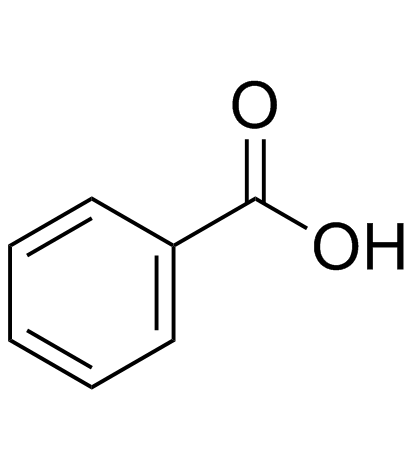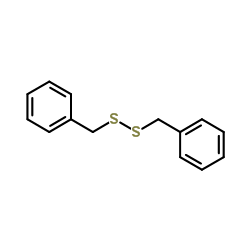无水醋酸铅 ,Lead Acetate ,99.9%
产品编号:Bellancom-B394174| CAS NO:301-04-2| 分子式:C4H6O4Pb| 分子量:325.29
本网站销售的所有产品仅用于工业应用或者科学研究等非医疗目的,不可用于人类或动物的临床诊断或者治疗,非药用,非食用,
| 产品名称 | 无水醋酸铅 |
|---|---|
| 英文名称 | Lead Acetate |
| CAS编号 | 301-04-2 |
| 产品熔点 | 280ºC |
| 产品沸点 | 117.1ºC at 760 mmHg |
| 产品密度 | 1.068g/cm3 |
| 产品闪点 | 40ºC |
| PSA | 37.30000 |
| 外观性状 | 固体;White to Almost white powder to crystal |
| 溶解性 | 水溶性:可溶;水溶解度:440 g/l 20 °C;微溶:乙醇 |
| 稳定性 | 用于制备其他铅盐,有毒,应密封保存。醋酸铅试纸遇千分之一或万分之一硫化氢溶液即变黑,可用于鉴定微量硫化氢。 用10%醋酸铅溶液浸透滤纸,放在完全不含硫化氢的空气中干燥,得到醋酸铅试纸。 |
| 储存条件 | 2-8°C |
相关文档
化学品安全说明书(MSDS)
下载MSDS质检证书(COA)
相关产品
| 危害码 (欧洲) | T: Toxic;N: Dangerous for the environment; |
|---|---|
| 风险声明 (欧洲) | 61-33-48/22-50/53-62 |
| 安全声明 (欧洲) | 53-45-60-61 |
| 危险品运输编码 | UN 1616 6.1/PG 3 |
| WGK德国 | 2 |
| RTECS号 | OF8050000 |
| 包装等级 | III |
| 海关编码 | 3822001000 |
Synonym:Acetic acid, lead (+2) salt trihydrate; Lead diacetate trihydrate; Plumbous acetate trihydrate; Sugar of lead, trihydrate Section 2 - COMPOSITION, INFORMATION ON INGREDIENTS
Risk Phrases: 33 48/22 61 62 50/53 Section 3 - HAZARDS IDENTIFICATION EMERGENCY OVERVIEW
Danger of cumulative effects. Harmful : danger of serious damage to health by prolonged exposure if swallowed. May cause harm to the unborn child. Possible risk of impaired fertility. Very toxic to aquatic organisms, may cause long-term adverse effects in the aquatic environment.Air sensitive. Potential Health Effects Eye: May result in corneal injury. May cause irreversible eye injury. Exposure to particulates or solution may cause conjunctivitis, ulceration, and corneal abnormalities. Skin: May cause skin irritation. Ingestion: May cause gastrointestinal irritation with nausea, vomiting and diarrhea. May cause kidney damage. Inhalation: May cause respiratory tract irritation. Chronic: Chronic exposure may cause blood effects. May cause kidney damage. Section 4 - FIRST AID MEASURES Eyes: Immediately flush eyes with plenty of water for at least 15 minutes, occasionally lifting the upper and lower eyelids. Get medical aid. Skin: Get medical aid. Flush skin with plenty of water for at least 15 minutes while removing contaminated clothing and shoes. Wash clothing before reuse. Ingestion: If victim is conscious and alert, give 2-4 cupfuls of milk or water. Never give anything by mouth to an unconscious person. Get medical aid. Inhalation: Remove from exposure and move to fresh air immediately. If not breathing, give artificial respiration. If breathing is difficult, give oxygen. Get medical aid. Notes to Physician: Antidote: The use of Calcium disodium EDTA as a chelating agent should be determined by qualified medical personnel. The use of d-Penicillamine as a chelating agent should be determined by qualified medical personnel. The use of Dimercaprol or BAL (British Anti-Lewisite) as a chelating agent should be determined by qualified medical personnel. Section 5 - FIRE FIGHTING MEASURES General Information: As in any fire, wear a self-contained breathing apparatus in pressure-demand, MSHA/NIOSH (approved or equivalent), and full protective gear. Water runoff can cause environmental damage. Dike and collect water used to fight fire. Dusts at sufficient concentrations can form explosive mixtures with air. During a fire, irritating and highly toxic gases may be generated by thermal decomposition or combustion. Extinguishing Media: Use alcohol foam, carbon dioxide, or water spray when fighting fires involving this material. Section 6 - ACCIDENTAL RELEASE MEASURES General Information: Use proper personal protective equipment as indicated in Section 8. Spills/Leaks: Avoid runoff into storm sewers and ditches which lead to waterways. Clean up spills immediately, observing precautions in the Protective Equipment section. Sweep up, then place into a suitable container for disposal. Avoid generating dusty conditions. Provide ventilation. Place under an inert atmosphere. Section 7 - HANDLING and STORAGE Handling: Wash thoroughly after handling. Wash hands before eating. Use with adequate ventilation. Minimize dust generation and accumulation. Do not get in eyes, on skin, or on clothing. Keep container tightly closed. Handle under an inert atmosphere. Store protected from air. Wash clothing before reuse. Storage: Store in a cool, dry, well-ventilated area away from incompatible substances. Keep containers tightly closed. Do not expose to air. Store under an inert atmosphere. Section 8 - EXPOSURE CONTROLS, PERSONAL PROTECTION Engineering Controls: Use process enclosure, local exhaust ventilation, or other engineering controls to control airborne levels below recommended exposure limits. Facilities storing or utilizing this material should be equipped with an eyewash facility and a safety shower. Exposure Limits CAS# 301-04-2: United States OSHA: 50 g/m3 TWA (as Pb); 30 g/m3 Action Level ( Pb. Poison - see 29 CFR 1910.10 25) (listed under Lead, inorgani compounds). Belgium - TWA: (listed as lead, inorganic compounds): 0.15 mg/m3 (dust and fume) Malaysia: (listed as lead, inorganic compounds): 0.05 mg/m3 TWA ( Pb) Netherlands: (listed as lead, inorganic compounds): 0.15 mg/m3 MA (dust and smoke, as Pb) Russia: (listed as lead, inorganic compounds): 0.5 mg/m3 TWA (as Spain: (listed as lead, inorganic compounds): 0.15 mg/m3 VLA-ED ( Pb) CAS# 6080-56-4: United Kingdom, WEL - TWA: (listed as lead compounds): 0.15 mg/m3 (as Pb) United Kingdom, WEL - STEL: (listed as lead compounds): 0.45 mg/m TWA (as Pb) France - VME: (listed as lead compounds): 0.1 mg/m3 VME (as Pb) Germany: (listed as lead compounds): 0.1 mg/m3 VME (as Pb) Japan: (listed as lead compounds): 0.1 mg/m3 OEL (except alkyl le compounds, as Pb) CAS# 7439-92-1: United Kingdom, WEL - TWA: 0.15 mg/m3 TWA United Kingdom, WEL - STEL: 0.45 mg/m3 TWA United States OSHA: ; 50 g/m3 PEL (as Pb); 30 g/m3 Action Level Pb. Poison - see 29 CFR 1910.10 25) Belgium - TWA: (listed as lead, inorganic compounds): 0.15 mg/m3 (dust and fume) France - VME: 0.1 mg/m3 VME Germany: 0.1 mg/m3 TWA (inhalable fraction) Japan: 0.1 mg/m3 OEL Malaysia: 0.05 mg/m3 TWA Netherlands: 0.15 mg/m3 MAC Russia: 0.01 mg/m3 TWA Russia: 0.005 mg/m3 STEL Spain: 0.15 mg/m3 VLA-ED Personal Protective Equipment Eyes: Wear appropriate protective eyeglasses or chemical safety goggles as described by OSHA's eye and face protection regulations in 29 CFR 1910.133 or European Standard EN166. Skin: Wear appropriate gloves to prevent skin exposure. Clothing: Wear appropriate protective clothing to prevent skin exposure. Respirators: A respiratory protection program that meets OSHA's 29 CFR 1910.134 and ANSI Z88.2 requirements or European Standard EN 149 must be followed whenever workplace conditions warrant respirator use. Section 9 - PHYSICAL AND CHEMICAL PROPERTIES Physical State: Solid Color: white Odor: acetic odor - weak odor pH: 5.5-6.5 (5% aq soln) Vapor Pressure: 0 atm at 30 C Viscosity: Not available. Boiling Point: decomposes Freezing/Melting Point: 75 deg C Autoignition Temperature: Not available. Flash Point: Not available. Explosion Limits, lower: Not available. Explosion Limits, upper: Not available. Decomposition Temperature: 200 deg C Solubility in water: Soluble. Specific Gravity/Density: 2.55 Molecular Formula: Pb(C2H3O2)2.3H2O Molecular Weight: 379.2798 Section 10 - STABILITY AND REACTIVITY Chemical Stability: Stable at room temperature in closed containers under normal storage and handling conditions. Takes up CO2 from air and becomes incompletely soluble. Slowly effloresces (loses water molecules of hydration) on exposure to air. Conditions to Avoid: Dust generation, exposure to air, excess heat. Incompatibilities with Other Materials: Strong oxidizing agents. Hazardous Decomposition Products: Carbon monoxide, carbon dioxide, lead/lead oxides. Hazardous Polymerization: Will not occur. Section 11 - TOXICOLOGICAL INFORMATION RTECS#: CAS# 301-04-2: AI5250000 CAS# 6080-56-4: OF8050000 CAS# 7439-92-1: OF7525000 LD50/LC50: Not available. CAS# 6080-56-4: Oral, rat: LD50 = 4665 mg/kg. CAS# 7439-92-1. Carcinogenicity: Lead acetate anhydrous - California: carcinogen, initial date 1/1/88 IARC: Group 2A carcinogen (listed as Lead, inorganic compounds). Acetic acid, lead(2+) salt trihydrate - California: carcinogen, initial date 10/1/92 (listed as Lead compounds NTP: Suspect carcinogen (listed as Lead compounds). Lead - ACGIH: A3 - Confirmed animal carcinogen with unknown relevance to California: carcinogen, initial date 10/1/92 NTP: Suspect carcinogen IARC: Group 2B carcinogen Other: See actual entry in RTECS for complete information. Section 12 - ECOLOGICAL INFORMATION Section 13 - DISPOSAL CONSIDERATIONS Dispose of in a manner consistent with federal, state, and local regulations. Section 14 - TRANSPORT INFORMATION IATA Shipping Name: LEAD ACETATE Hazard Class: 6.1 UN Number: 1616 Packing Group: III IMO Shipping Name: LEAD ACETATE Hazard Class: 6.1 UN Number: 1616 Packing Group: III RID/ADR Shipping Name: LEAD ACETATE Hazard Class: 6.1 UN Number: 1616 Packing group: III USA RQ: CAS# 301-04-2: 10 lb final RQ; 4.54 kg final RQ USA RQ: CAS# 7439-92-1: 10 lb final RQ (no reporting of releases of this hazardo Section 15 - REGULATORY INFORMATION European/International Regulations European Labeling in Accordance with EC Directives Hazard Symbols: T N Risk Phrases: R 61 May cause harm to the unborn child. R 33 Danger of cumulative effects. R 48/22 Harmful : danger of serious damage to health by prolonged exposure if swallowed. R 50/53 Very toxic to aquatic organisms, may cause long-term adverse effects in the aquatic environment. R 62 Possible risk of impaired fertility. Safety Phrases: S 53 Avoid exposure - obtain special instructions before use. S 45 In case of accident or if you feel unwell, seek medical advice immediately (show the label where possible). S 60 This material and its container must be disposed of as hazardous waste. S 61 Avoid release to the environment. Refer to special instructions/safety data sheets. WGK (Water Danger/Protection) CAS# 301-04-2: 2 CAS# 6080-56-4: 2 CAS# 7439-92-1: No information available. Canada CAS# 301-04-2 is listed on Canada's DSL List. CAS# 7439-92-1 is listed on Canada's DSL List. CAS# 301-04-2 is listed on Canada's Ingredient Disclosure List. CAS# 6080-56-4 is not listed on Canada's Ingredient Disclosure List. CAS# 7439-92-1 is listed on Canada's Ingredient Disclosure List. US FEDERAL TSCA CAS# 301-04-2 is listed on the TSCA inventory. CAS# 6080-56-4 is not on the TSCA Inventory because it is a hydrate. It is considered to be listed if the CAS number for the anhydrous form is on the inventory (40CFR720.3(u)(2)). CAS# 7439-92-1 is listed on the TSCA inventory. SECTION 16 - ADDITIONAL INFORMATION N/A |












 浙公网安备 33010802013016号
浙公网安备 33010802013016号